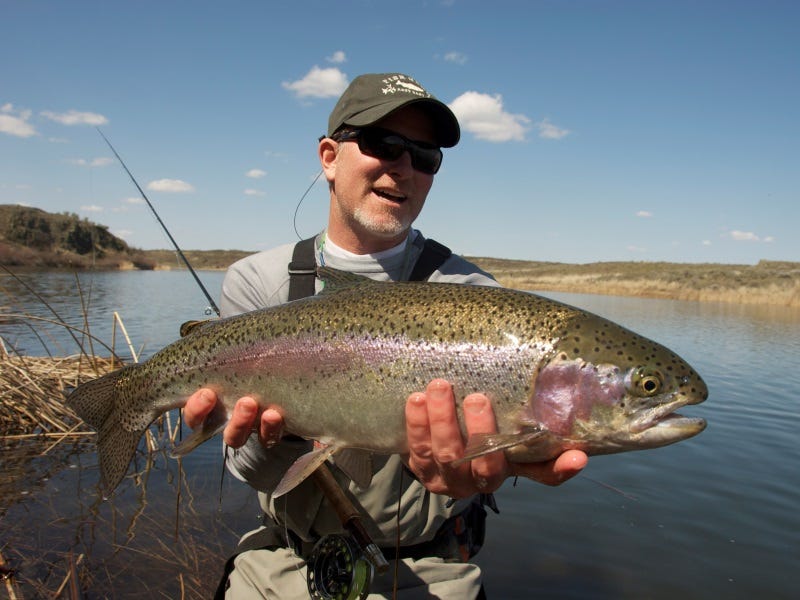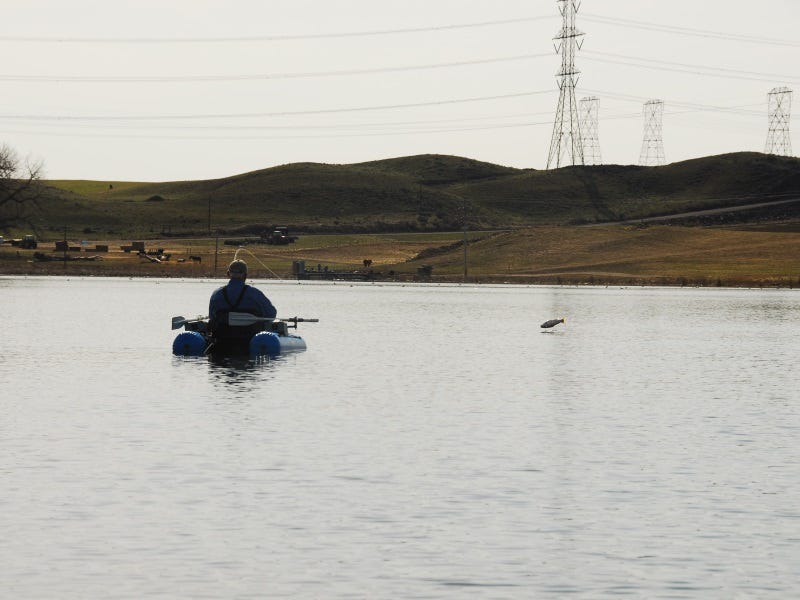The Stillwater Dilemma

Longer, stillwater-specific rods may put more fish in your net.
by Keith Roe

Choosing the right rod for stillwater fishing is a topic that garners a lot of discussion. I have noticed that a fair number of stillwater anglers are quite content with the same weight and length of rod that they use for most of their trout fishing, on lakes and rivers. To some extent one rod will do the job. But . . . .
Before purchasing a rod I always ask: How will I fish the rod?; What style of fishing will I do?; What size of fish will I encounter?; How much can I budget for a rod?; I also converse with other anglers and ask them which rods they prefer. Asking yourself some of these questions may help with your rod buying decisions.
Some tips and trips for fishing stillwater in the fall.
Because most stillwater fishing is conducted from a boat I always consider the watercraft I might fish from. Some stillwater boats include floattubes, pontoons, prams, McKenzie style driftboats and flat-bottom john boats. Hard boats can be broken down into boats you can only cast safely from in a seated position, and boats you can cast from whether seated or standing. For those who cast from a seated position I recommend a 9’ 6” to 10’ 3” rod. That extra length, compared to standard 9-footers that most people use on streams, offers a little more height, which raises your backcast above the water. If you are fishing out of a boat that you can stand up in, a 9’ rod may work just fine. That doesn’t mean that the longer rods won’t work while standing—I use the longer rods most of the time because, for me, they seem to handle the bigger fish best.
We've got a wide range of fly rod options online here.
The action of a rod is also something to consider. I lean towards a medium action when I’m mainly casting a full-sinking line, or if I’m throwing heavy flies. That medium action also is more forgiving when fighting bigger fish on light tippet. That’s because it flexes more than a fast-action rod and that cushions the take and prevents quick breakoffs. You should also factor in your casting ability when choosing between a slow, medium, or fast-action rod. Fast-actions, typically, are less forgiving than medium-actions. I would recommend testing different rods with different lines to see what best fits your style and limits.

Now comes the question of what weight rod to use. This depends a lot on the size of fish you may encounter. I’m just going to throw out some ideas and suggestions based on my preferences and the preferences of other people I know. When choosing the weight of the rod, I also consider the fish. If you hook a monster on a four-weight, that fish may not be in good shape after release because you’ve probably fought that fish to its limit. And remember, stillwater trout run, on average, much heavier than river fish.
We've got the flies you need to fish stillwater available here.
So, at the low end of the scale you have four-weight stillwater rods. Today’s 4-weight rods come in a variety of lengths. They are perfectly capable of handling smaller fish on smallish water bodies. If you are mainly fishing small lakes and ponds with fish topping out at 16 inches the 4 weight might be ok for you. The 5 weight is by far the more popular choice and probably the most popular rod in the West. It handles most trout up to 24 inches without a problem and is strong enough to punch through the wind.
Now we come to the 6 weight, which is my rod of choice. I probably own more 6-weight rods than anything else. I like the idea that I can use it for 12” planter rainbows all the way up to 10-pound Lahontan cutthroats. If you are after bigger fish a 6 weight or a 7 weight should serve best. And with that rod, you can double up and throw streamers out of a drift boat when floating a river, without wearing out your arm. So, for my money, you can’t beat the 6 weight for stillwater fishing and it serves nicely when you hit a river to throw the big, heavy flies.
Some of my favorite rods are the Echo Ion XL 10’ 6 weight. The Loop Cross in the 9’ 6 weight also is a good choice. The Loop Evotec in the 10’ 7 weight is perfect for large (and windy) lakes that hold large fish, meaning five to 10-pounders.
